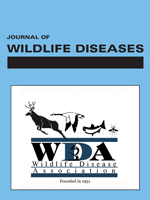Bald eagles (Haliaeetus leucocephalus) may be at risk from contaminants in their diet and young birds may be particularly sensitive to contaminant exposure. To evaluate potential risks from dietary mercury exposure to eagle nestlings in South Carolina (USA), we surveyed mercury concentrations in 34 nestlings over two breeding seasons (1998 and 1999). Samples were also obtained from several post-fledging eagles in the region. Nestling feather mercury ranged from 0.61–6.67 μg Hg/g dry weight, nestling down mercury from 0.50–5.05 μg Hg/g dry weight, and nestling blood mercury from 0.02–0.25 μg Hg/g wet weight. We did not detect significant differences in tissue mercury between nestlings from coastal and inland regions in contrast to some other studies of piscivorous birds. Mercury concentrations were much higher in the post fledging birds we sampled. Our data show that nestling eagles in South Carolina are accumulating mercury, and that concentrations in older birds may exceed regulatory guidelines.
How to translate text using browser tools
1 October 2002
MERCURY IN BALD EAGLE NESTLINGS FROM SOUTH CAROLINA, USA
Charles H. Jagoe,
A. Lawrence Bryan,
Heather A. Brant,
Thomas M. Murphy,
I. Lehr Brisbin

Journal of Wildlife Diseases
Vol. 38 • No. 4
October 2002
Vol. 38 • No. 4
October 2002
Bald Eagle
Haliaeetus leucocephalus
mercury
nestlings




